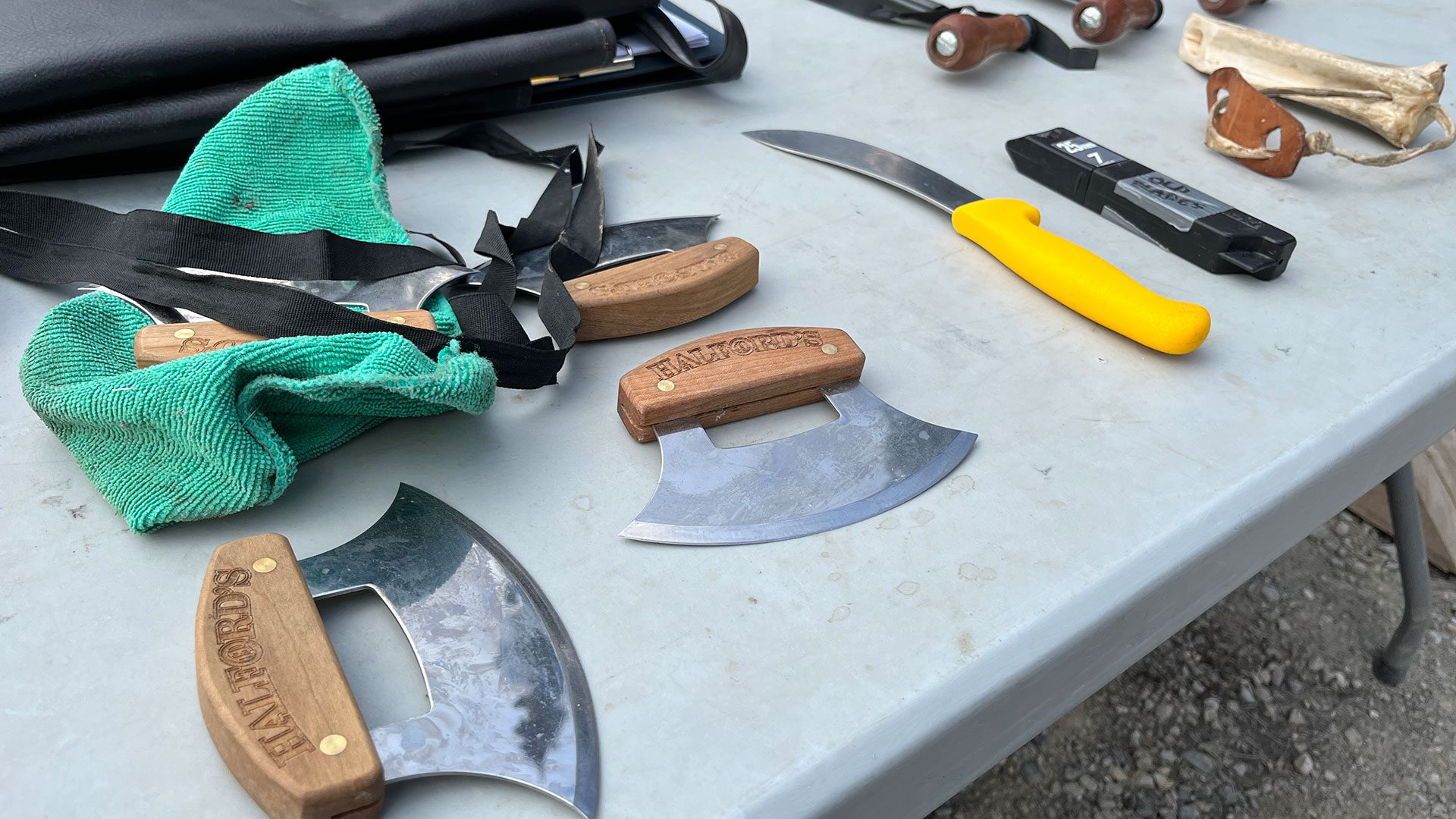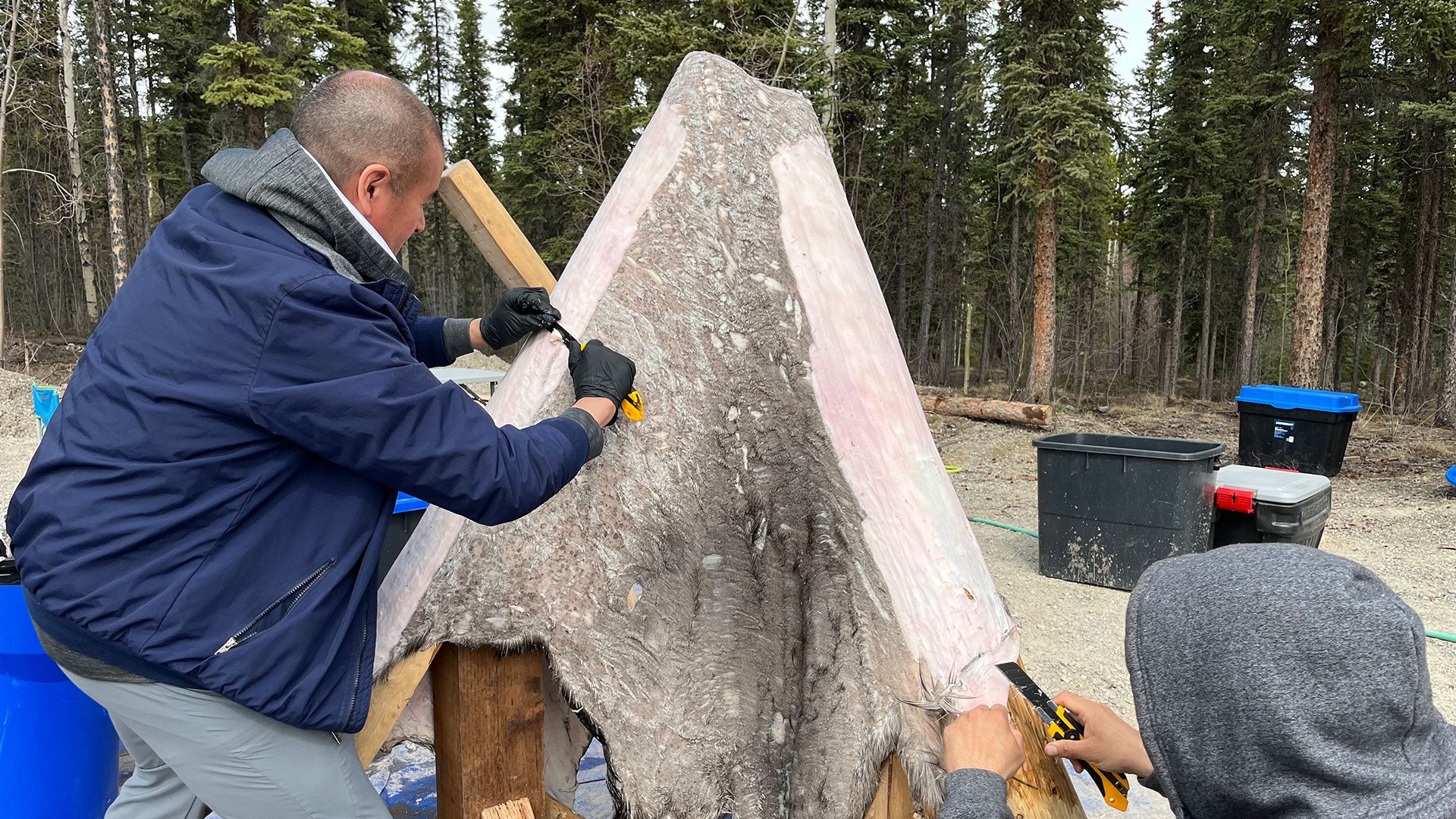Kwanlin Dün Elder Gertie Tom was just eight-years-old when she began learning the art of moose hide tanning.
By watching her mother perform the labour-intensive, multi-step process, the 92-year-old is considered an expert in the traditional practice that helped clothe and shelter First Nations people in Yukon and beyond for generations.
“Watching my mother and what she does, and if you really want to learn you got to put your mind into it, it’s lots of work,” Tom said.
But with the invention of commercially tanned products and readily available clothing and materials, moose hide tanning isn’t practiced to the degree it once was.
That’s why the Kwanlin Dün First Nation(KDFN) in Whitehorse held a community hide camp last week for its citizens to relearn and reclaim the important traditional practise.
No one knows the process better than Tom.
As the author of How to Tan Hides in the Native Way, Tom literally wrote the book on the subject.
She recalls learning to tan moose hide as a rite of passage. That’s because it was women who were responsible for tanning hides.
“When my mother tell us what to do, we did what she asked us to do,” she said. “Women would get together and do it, they all get together and tan the hides, that’s what they do.”

Learning to tan hides was critical for survival, too.
“It was so important because in the olden days there were no stores to buy clothes,” she said. “We got the skin, that’s what they use to make the clothes out of.”
It’s a practice close to KDFN citizen Steven Shorty’s heart.
Shorty is a drum maker who works with caribou hides, but working with moose hides is a first. He said the material is more challenging to work with.
“(Caribou) is a little bit different, easier, because it’s a lot thinner than a moose,” he said.
Shorty, who was tasked with graining, the process of removing the fur from the hide, showed school children how to preform the delicate scrapping action with a long double-handled knife.
It’s a skill he said he’s happy to pass on to the younger generations.
“I’m glad to see that they’re looking forward to doing stuff. It takes time to learn. Nobody’s going to be perfect at it.”
The process of transforming animal skin into durable material like boots, jackets, or rope is time-consuming and tedious.
It includes scrapping flesh from the hide using a took made from leg bone of a moose, as well as repeatedly soaking, stretching and drying skin in a solution until it’s ready to be smoked.

It’s a process that intrigued 17-year-old Kianna Blake.
“It’s very fascinating to see how we deal with our hides to turn it into a hide that we bead with, and there’s so many steps to get to where we are right now,” she said.
“It’s a very long process and one of the hides that we have here today are one of the hides that we got last year for a hunt with Kwanlin Dün.”
It’s young people like Blake that Tom hopes will carry on tradition for the next generation.
“Hopefully, (if) some of them want to learn, (they’ll keep on learning) what they show here.”









